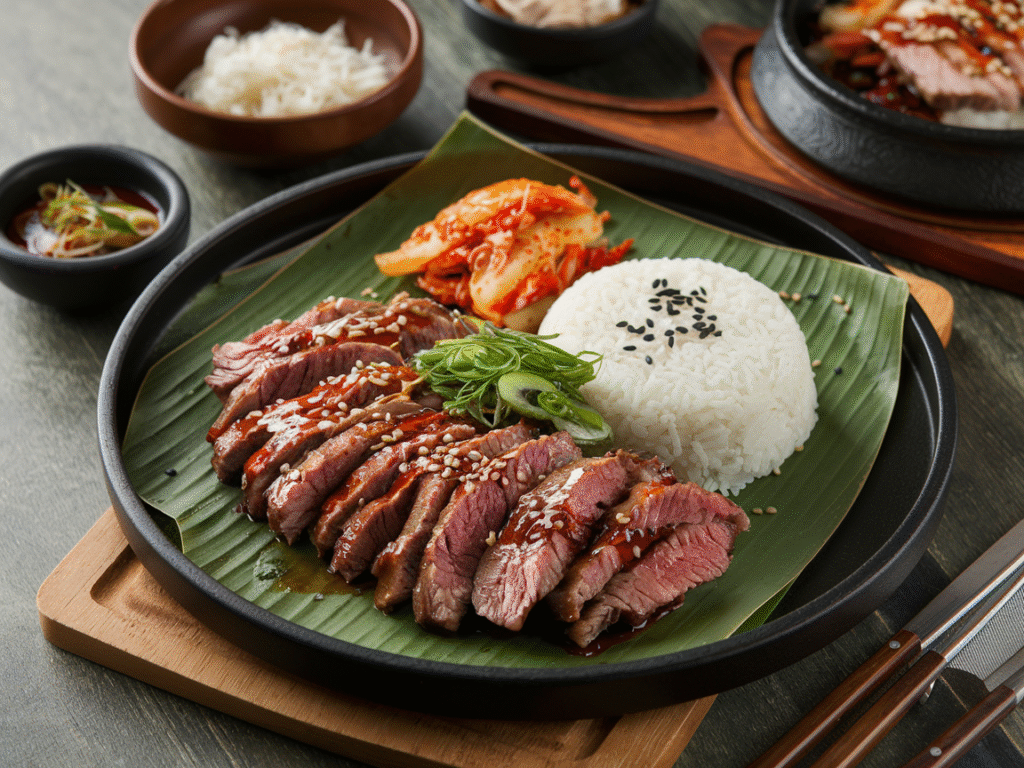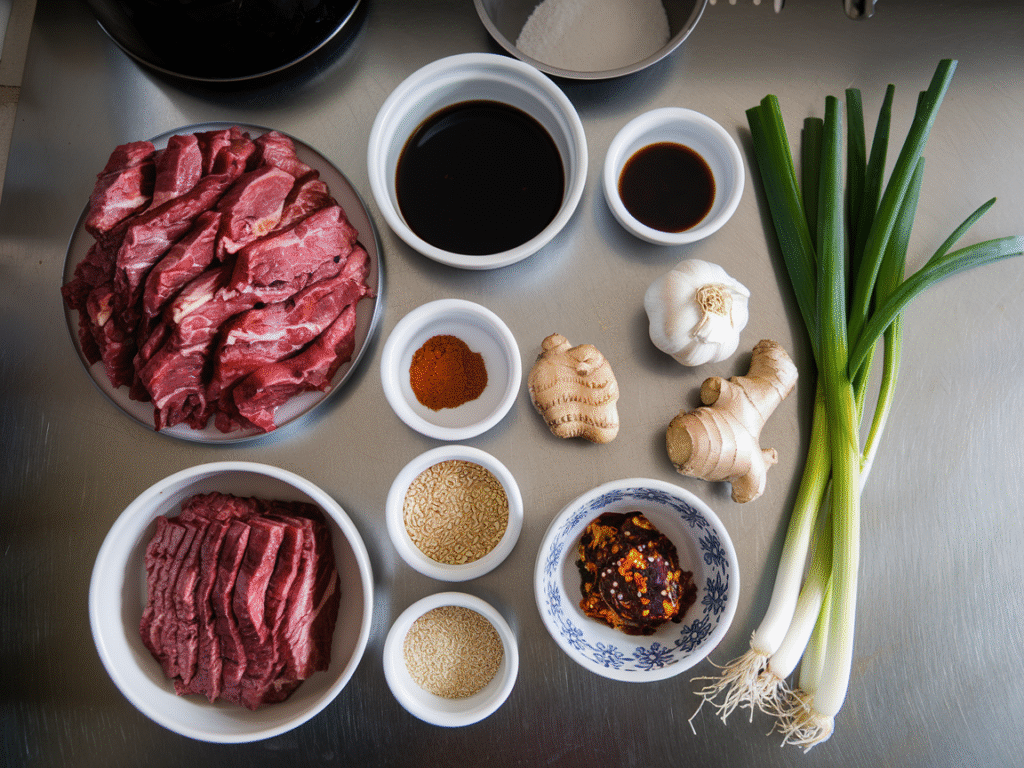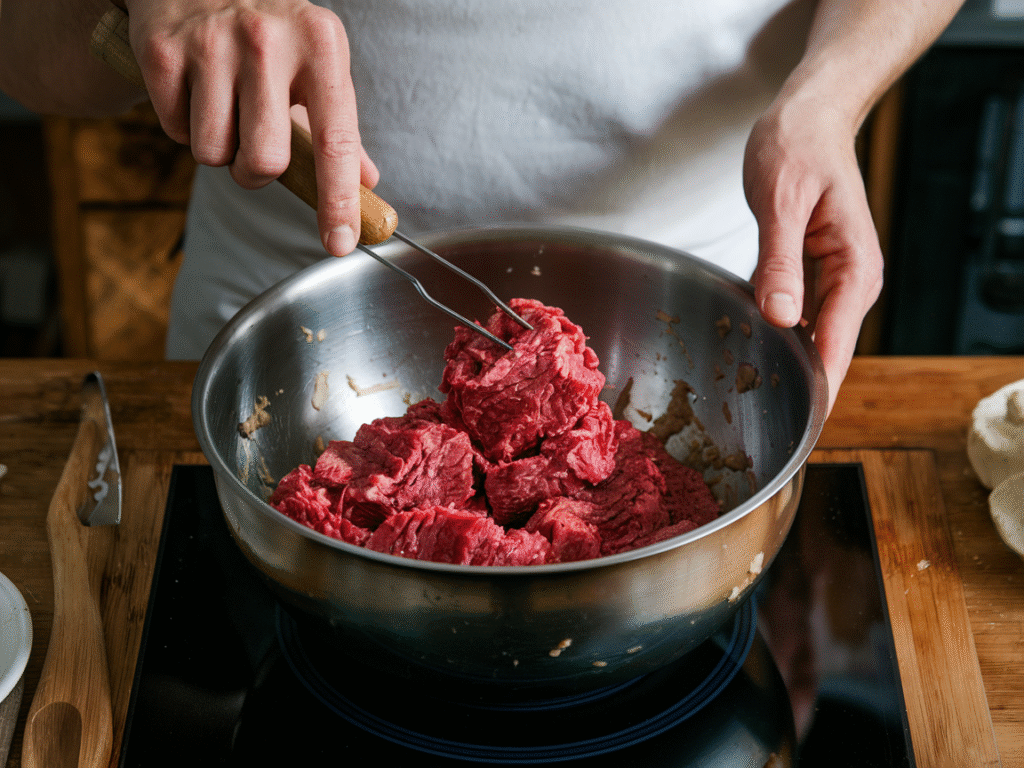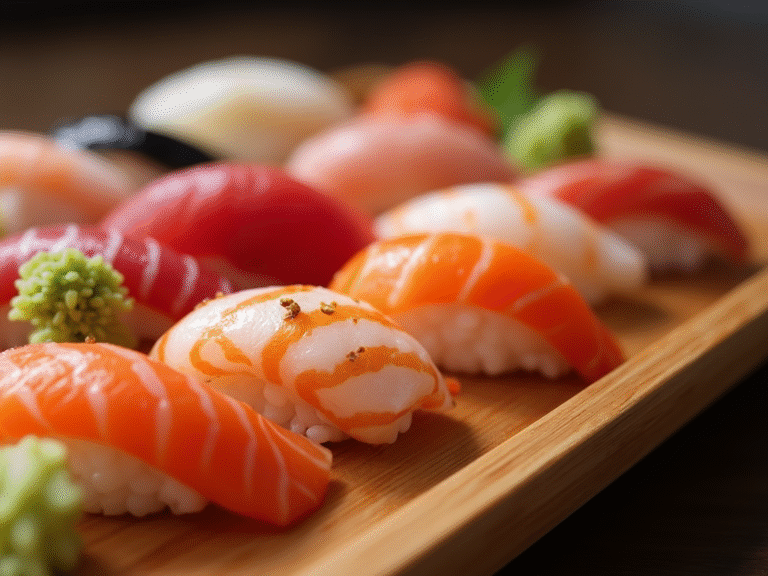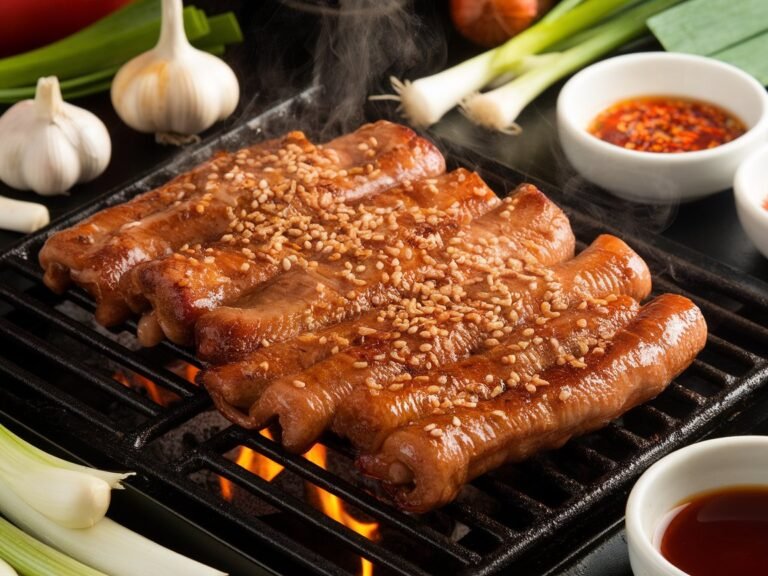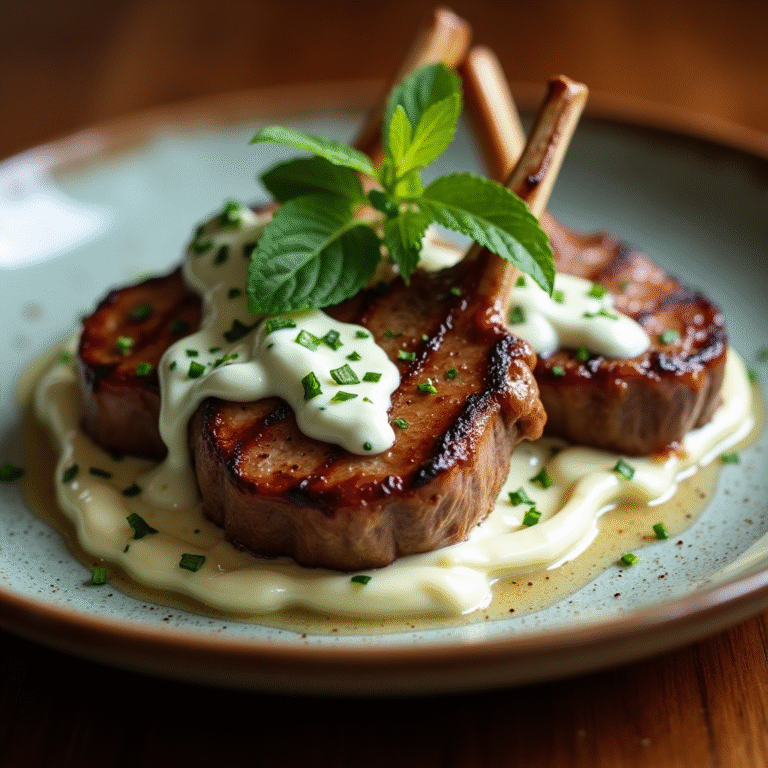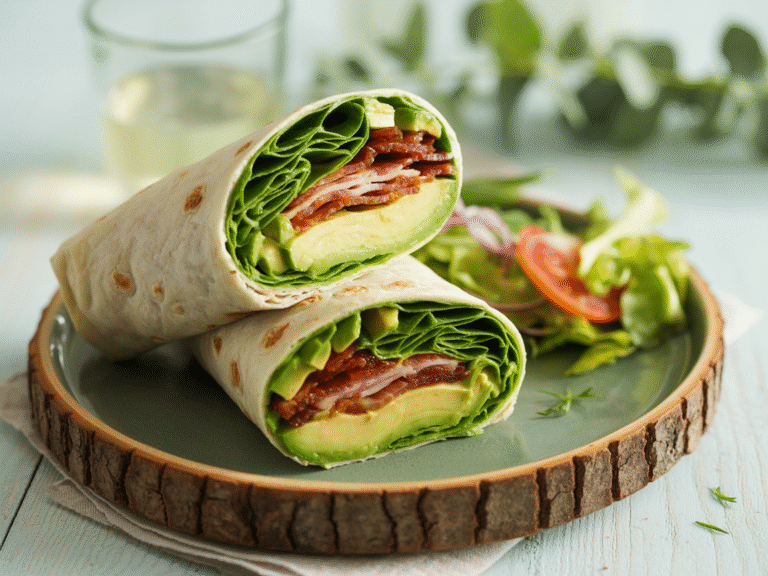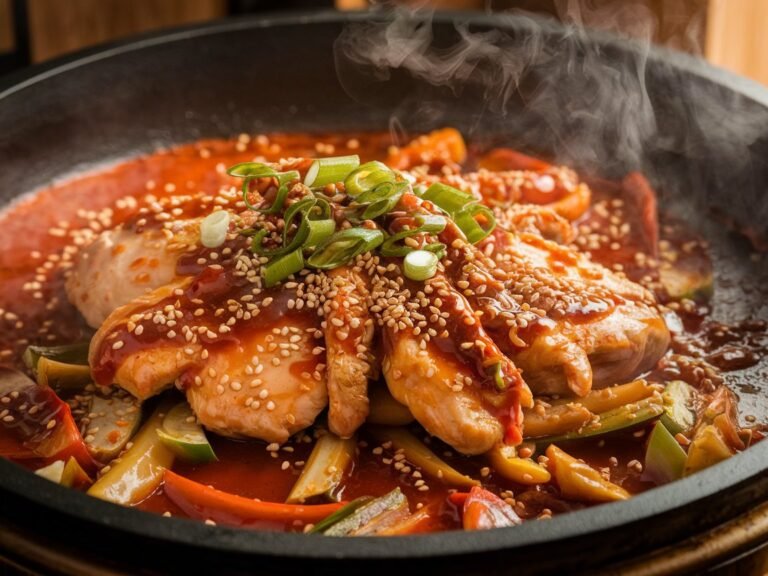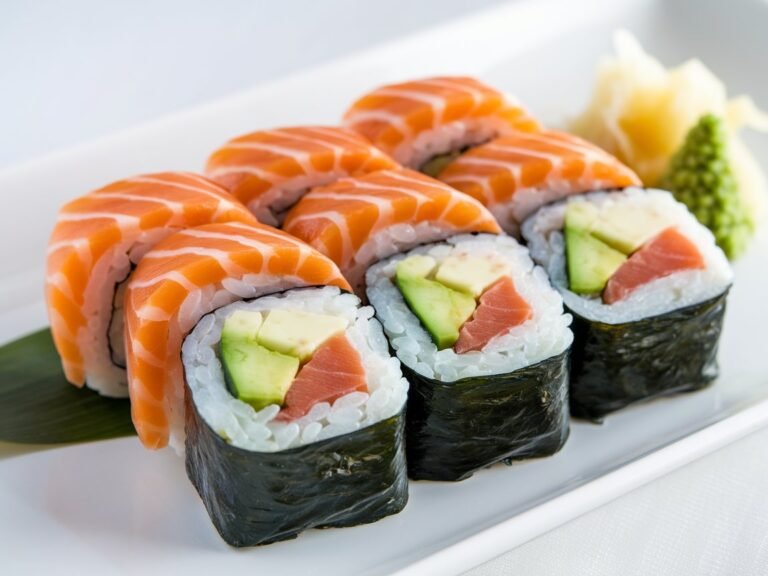Bulgogi Recipe | Sweet and Savory Korean BBQ Beef
Introduction
When it comes to Korean cuisine, Bulgogi is undoubtedly one of the most beloved dishes. This classic Korean BBQ recipe features thinly sliced beef marinated in a perfect balance of sweet, savory, and spicy flavors. The beef is tender, juicy, and grilled or pan-cooked to perfection. With its mouthwatering marinade, Bulgogi is a dish that’s sure to win everyone over.
What makes Bulgogi so irresistible is the marinade—a combination of soy sauce, sesame oil, garlic, ginger, brown sugar, and gochujang (Korean chili paste). These ingredients work together to infuse the beef with deep, complex flavors that are both satisfying and unforgettable. It’s a dish that’s not only comforting but also incredibly versatile. Whether you’re serving it over rice, in a lettuce wrap, or alongside some kimchi, Bulgogi is always a crowd-pleaser.
In this recipe, I’ll show you how to make authentic Bulgogi at home, with easy-to-follow instructions and tips for making this dish even more flavorful. Let’s dive into this delicious Korean BBQ classic!
Why You’ll Love This Recipe
- Flavorful and Tender: The marinade makes the beef incredibly tender and infuses it with layers of sweet, savory, and spicy flavors.
- Quick and Easy: With just a few ingredients and some marinating time, you can have a flavorful dish ready in under 30 minutes.
- Customizable: This recipe is easy to adapt to your taste. Adjust the spice level with more or less gochujang, or swap the beef for chicken or pork.
- Perfect for Any Occasion: Whether you’re cooking for a busy weeknight or hosting a Korean BBQ night with friends, Bulgogi is a dish that’s sure to impress.
Ingredients Breakdown
- Beef (Thinly Sliced)
The star of the show is the beef. You’ll want to use a tender cut of beef that’s easy to slice thinly. Ribeye or sirloin are excellent choices, as they’re both tender and flavorful. If you’re having trouble slicing the beef thinly, place it in the freezer for 30-45 minutes to firm it up, making it easier to slice. For a leaner option, you can substitute with flank steak or skirt steak. - Soy Sauce
Soy sauce is the base of the Bulgogi marinade, adding a savory, umami-rich flavor to the dish. It helps tenderize the beef while enhancing its natural flavors. You can use regular soy sauce, or opt for low-sodium soy sauce if you prefer a lighter flavor. For a gluten-free version, tamari soy sauce works perfectly as a substitute. - Sesame Oil
Sesame oil brings a distinct nutty flavor to the marinade. It’s one of the key ingredients in Korean cooking and adds depth to the Bulgogi’s flavor. Be sure to use toasted sesame oil, as it has a more intense flavor than regular sesame oil. If you can’t find sesame oil, you can use vegetable oil or canola oil, though the flavor won’t be as rich. - Brown Sugar
Brown sugar provides sweetness to balance out the savory soy sauce and the heat from the gochujang. It also helps the marinade caramelize as it cooks, giving the beef a beautiful, glossy finish. If you prefer, you can substitute brown sugar with honey or maple syrup, but the texture of the marinade may change slightly. - Gochujang (Korean Chili Paste)
Gochujang is the key ingredient that gives Bulgogi its signature heat and depth of flavor. It’s a fermented chili paste that’s both spicy and slightly sweet. If you’re new to gochujang, start with a small amount and taste as you go to adjust the spice level. You can substitute with chili paste or chili flakes, but the flavor won’t be as authentic. - Garlic and Ginger
Fresh garlic and ginger are essential for adding aromatic depth to the marinade. Garlic imparts a savory, slightly pungent flavor, while ginger adds a refreshing, zesty note. Using fresh garlic and ginger is important for the best flavor, but if you don’t have them on hand, you can use garlic powder and ground ginger. - Green Onions
Green onions (also known as scallions) are used both in the marinade and as a garnish. They add a mild onion flavor and a refreshing crunch that balances the richness of the beef. Slice the green onions thinly for the best presentation and even distribution of flavor. - Sesame Seeds
Sesame seeds are an optional but highly recommended garnish for Bulgogi. They add a nice crunch and a nutty flavor that complements the dish beautifully. You can use toasted sesame seeds for extra flavor or plain sesame seeds if that’s what you have on hand. - Rice (for Serving)
Bulgogi is traditionally served with steamed rice, which soaks up the flavorful marinade and complements the richness of the beef. Jasmine rice is a great option, but you can also use brown rice, short-grain rice, or even cauliflower rice for a low-carb option.
Step-by-Step Instructions
- Prepare the Beef
Start by slicing the beef thinly against the grain. Aim for slices that are about 1/8-inch thick. This will ensure that the beef cooks quickly and remains tender. If the beef is too soft to slice thinly, place it in the freezer for 30-45 minutes to firm it up before slicing. - Make the Marinade
In a large bowl, whisk together 1/4 cup soy sauce, 2 tablespoons sesame oil, 2 tablespoons brown sugar, 2 minced garlic cloves, 1 tablespoon freshly grated ginger, and 2 tablespoons gochujang. Mix well until the sugar dissolves and the marinade is smooth. Taste the marinade and adjust the seasoning if necessary—add more gochujang for extra heat, or more brown sugar for sweetness. - Marinate the Beef
Add the sliced beef to the marinade, making sure each slice is well-coated. You can marinate the beef in a shallow dish or place everything in a ziplock bag. Seal the bag and refrigerate for at least 30 minutes. For the best flavor, marinate the beef for 2-3 hours, or even overnight. - Cook the Beef
Heat a large skillet or grill pan over medium-high heat. Add the marinated beef in a single layer and cook for 2-3 minutes per side, or until the beef is browned and cooked through. Be careful not to overcook the beef, as it can become tough. If your pan is small, cook the beef in batches to avoid overcrowding. - Garnish and Serve
Once the beef is cooked, transfer it to a serving platter. Garnish with toasted sesame seeds and thinly sliced green onions. Serve the Bulgogi with steamed rice, kimchi, or sautéed vegetables for a complete meal. - Enjoy
Bulgogi is best served hot, right after cooking, with a side of rice and extra garnishes. The flavors of the marinade will continue to meld together, making each bite of beef tender and flavorful.
Tips and Variations
- Adjust the Spice Level: If you prefer a milder Bulgogi, reduce the amount of gochujang, or leave it out entirely. You can also add chili flakes for a less intense but still flavorful heat.
- Grill It: For an authentic BBQ flavor, grill the marinated beef on high heat instead of cooking it in a skillet. This will give it a smoky flavor and slight char.
- Make it Vegetarian: Swap the beef with tofu, seitan, or portobello mushrooms for a vegetarian or vegan version of Bulgogi.
- Use Different Proteins: This recipe works great with chicken, pork, or shrimp. Adjust the cooking time based on the protein you use.
Serving Suggestions
- Sides: Serve Bulgogi with traditional Korean sides like kimchi, pickled vegetables, or a simple cucumber salad. You can also pair it with a fresh vegetable stir-fry or sautéed spinach for extra flavor.
- Garnishes: Garnish with more sliced green onions, sesame seeds, and a drizzle of sesame oil for added depth of flavor.
- Pairing Drinks: Bulgogi pairs well with a cold Korean beer like Cass or Hite. If you prefer wine, a light red wine like Pinot Noir works well, as it complements the savory and spicy flavors of the dish.
Storage and Reheating Instructions
- Fridge: Leftover Bulgogi can be stored in an airtight container in the refrigerator for up to 3 days. The flavors will continue to develop, making the leftovers even tastier.
- Freezer: You can freeze the cooked Bulgogi for up to 1 month. Let it cool completely before transferring it to a freezer-safe container or bag. Thaw in the fridge overnight before reheating.
- Reheating: To reheat, place the Bulgogi in a skillet over medium heat for 2-3 minutes, or microwave it in 30-second intervals until heated through.
Recipe Notes
- Can Be Prepped Ahead of Time: You can marinate the beef the night before and cook it the next day for an easy weeknight meal.
- Best with Fresh Ingredients: Use fresh garlic and ginger for the best flavor. Fresh ingredients provide a more aromatic and authentic taste.
Nutrition Information (Per Serving)
| Nutrient | Amount |
|---|---|
| Calories | 300 kcal |
| Fat | 18 g |
| Saturated Fat | 4 g |
| Carbohydrates | 12 g |
| Sugar | 8 g |
| Fiber | 2 g |
| Protein | 25 g |
| Sodium | 650 mg |
| Cholesterol | 60 mg |
| Calcium | 50 mg |
| Iron | 2 mg |
Nutrition information is an estimate and may vary based on specific ingredients used.
Recipe Card Summary
- Course: Main Course
- Cuisine: Korean
- Servings: 4
- Prep Time: 10 minutes (plus marination time)
- Cook Time: 10 minutes
- Total Time: 30 minutes
Ingredients
- 1 lb beef (ribeye, sirloin, or skirt steak), thinly sliced
- 1/4 cup soy sauce
- 2 tbsp sesame oil
- 2 tbsp brown sugar
- 2 garlic cloves, minced
- 1 tbsp fresh ginger, grated
- 2 tbsp gochujang (Korean chili paste)
- 1/4 tsp black pepper
- 1/4 cup toasted sesame seeds
- 2 green onions, sliced (for garnish)
- Cooked rice (for serving)
Instructions
- Slice the beef thinly against the grain.
- Whisk together soy sauce, sesame oil, brown sugar, garlic, ginger, and gochujang for the marinade.
- Marinate the beef for 30 minutes (or longer for deeper flavor).
- Cook the beef in a skillet over medium-high heat for 2-3 minutes per side.
- Garnish with sesame seeds and green onions. Serve with rice.
Notes
- Marinate the beef ahead of time for better flavor.
- Can be served with kimchi and sautéed vegetables.
Health Benefits
- Beef: Rich in protein and iron, beef helps in muscle building and energy production.
- Gochujang: Contains capsaicin, which boosts metabolism and aids digestion.
- Sesame Oil: Full of healthy fats, sesame oil promotes heart health and reduces inflammation.
FAQs
- Can I use chicken or pork instead of beef?
Yes, you can use chicken, pork, or even tofu. Just adjust the cooking time based on the protein you use. - How can I adjust the spice level?
You can reduce the amount of gochujang or omit it for a milder Bulgogi. Add chili flakes for a more moderate heat. - Can I make this dish ahead of time?
Yes, you can marinate the beef ahead of time and store it in the fridge for up to 24 hours. - Can I freeze Bulgogi?
Yes, Bulgogi can be frozen for up to 1 month. Let it cool completely before freezing, and thaw in the fridge before reheating. - What sides go well with Bulgogi?
Serve Bulgogi with rice, kimchi, and a fresh vegetable salad or sautéed greens for a well-rounded meal. - Can I grill the meat instead of using a skillet?
Absolutely! Grilling the meat will add a smoky flavor and crispy edges, making the Bulgogi even more delicious.
Final Thoughts
Bulgogi is a flavorful, satisfying dish that brings the bold flavors of Korean BBQ right into your home. Whether you’re cooking for a special occasion or just craving something savory, this recipe is sure to be a hit. I hope you enjoy making it, and I’d love to hear how it turns out for you in the comments below!

